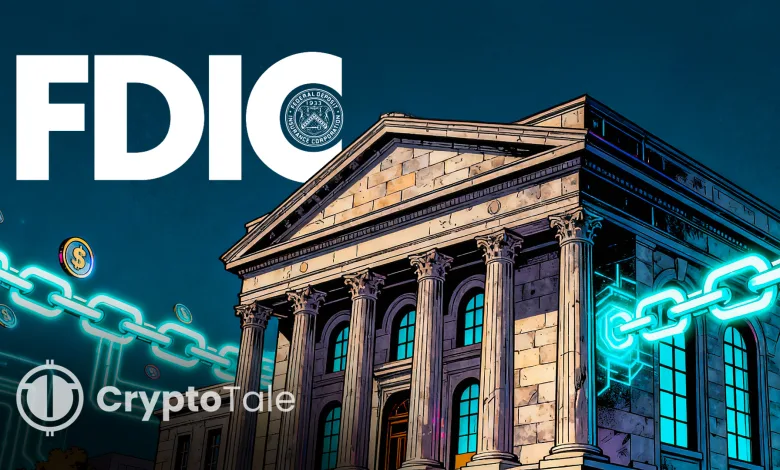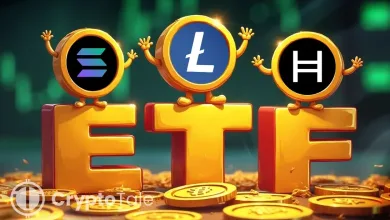FDIC Builds Framework for Blockchain-Based Bank Deposits

- Tokenized deposits gain regulatory focus as FDIC leaders outline plans for new guidance.
- Fintech growth raises concern over digital accounts without insured backing today.
- Tokenized real-world assets rise past twenty-four billion dollars during rapid market expansion.
The FDIC is preparing formal guidance to help banks manage deposit insurance as deposits move onto blockchain systems, according to Bloomberg. Acting FDIC Chair Travis Hill confirmed the plan during the Federal Reserve Bank of Philadelphia’s Fintech Conference. He said a deposit on a blockchain should retain the same legal standing as a deposit in traditional finance, which sparked industry attention as tokenization efforts grow across regulated and non-bank platforms.
Tokenized Deposits Enter Regulatory Focus
Hill told attendees that the agency is developing rules to guide banks as they place deposits on blockchain or other distributed-ledger systems. He said a deposit remains a deposit even when transferred through new technology, according to Bloomberg. His comments offered clarity as banks test digital representations of deposits for faster settlement and broader financial services.
He also drew a clear boundary between tokenized deposits and stablecoins. Tokenized deposits represent claims on real funds held in insured bank accounts, whereas stablecoins typically do not directly link to federally insured deposits. This distinction matters because many fintech firms offer digital assets that users assume are insured, yet the firms themselves are not banks.
Fintech platforms often rely on FDIC-insured partner banks to extend pass-through coverage to customers. These arrangements allow users to receive insurance protection when conditions are correctly structured. Still, risks emerge when account setups are unclear or when platforms collapse. This ongoing challenge raises a pivotal question: Can customers safely rely on FDIC protection when fintech failures occur during rapid tokenization growth?
Fintech Strains and Rising Tokenization Trends
The FDIC has repeatedly cautioned that certain fintech companies do not convey the pass-through rules properly. Additionally, a lot of customers assume that digital wallets or app accounts automatically come with FDIC coverage. Nevertheless, this is true only if certain conditions through partner-bank structures are satisfied.
On the other hand, regulators must revise the consumer protection laws as the demand for tokenized products increases. This request is growing at the same pace as the real-world asset tokenization.
RedStone reported that tokenized RWAs, excluding stablecoins, exceeded $24 billion in the first half of the year. Private credit and U.S. Treasuries form most of the market. BlackRock advanced the trend in 2024 when it launched BUIDL, a tokenized money market fund.
The FDIC’s work comes as technology firms and banks explore blockchain for settlement, custody, and liquidity operations. Hill acknowledged this momentum, saying regulators need clear standards to support responsible innovation.
Related: Federal Regulators Outline Crypto Custody Rules for Banks
Stablecoin Regime in Development Under GENIUS Act
Hill said the agency is also crafting a stablecoin issuance regime as required by the GENIUS Act, according to Law360. He expects a formal proposal by the end of 2025. The plan includes capital standards, reserve requirements, and risk management rules for FDIC-regulated issuers.
He noted that it is too early to estimate the number of applicants. Even so, FDIC staff are actively building criteria for institutions that want to issue insured stablecoins or operate within the regulated framework.
At the same time, the Deposit Insurance Fund continues to recover after its reserve ratio fell following a surge in deposits during the 2020 pandemic period. The FDIC projected that the fund will return to its statutory minimum by late 2025, three years ahead of schedule. This recovery strengthens the backdrop as regulators plan digital-asset insurance structures for a modernized banking environment.





